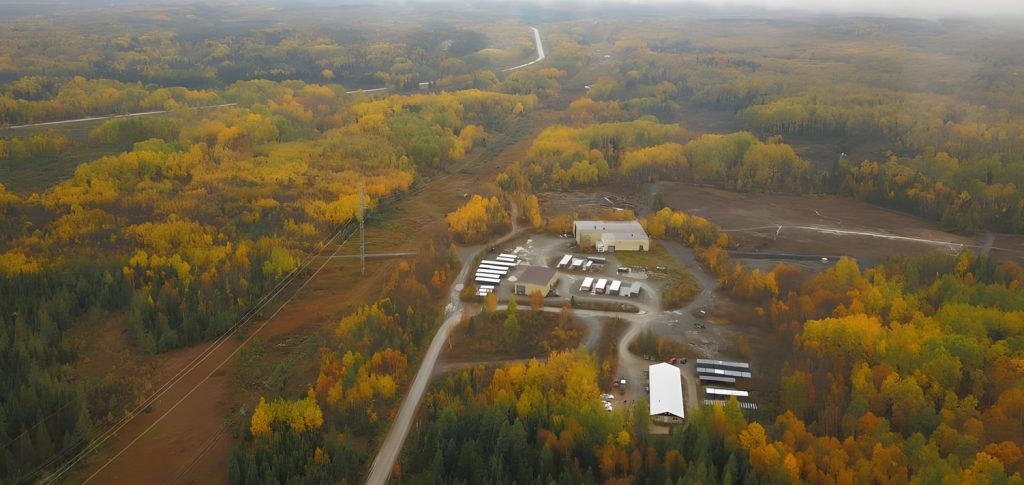Radisson Mining extends high-grade mineralization at O’Brien Project, Quebec

Radisson Mining Resources Inc. [TSXV: RDS; OTCQB: RMRDF] reported results from three deep diamond drill holes completed at its 100%-owned O’Brien Gold Project in the Abitibi region of Québec. These results are part of Radisson’s ongoing and fully funded, 35,000-metre drill program, and represent the first deep drill holes of the current campaign.
The three drill holes reported today represent an approximately 200-metre-wide fence to the west, centre and east of the down-plunge extension of a high grade mineralization trend at the Project labeled “Trend 1.” The fence was located at a vertical depth of approximately 1,100 metres, 170 metres below the base of the existing Mineral Resource and below the level of the historic workings at the adjacent O’Brien mine. Of note, DDH OB-24-324, the central hole of the fence located directly below “Trend 1”, returned a wide intersection of high-grade mineralization with extensive visible.
Highlights: OB-24-324 intersected 27.61 g/t gold over 6.0 metres, including 102.00 g/t Au over 1.1 metres, and a separate mineralized interval averaging 6.83 g/t Au over 10.0 metres, including 40.20 g/t Au over 1.5 metres.
OB-24-322 intersected a mineralized interval averaging 8.75 g/t Au over 5.2 metres, including 27.20 g/t Au over 1.4 metres.
Matt Manson, President & CEO, commented: “The results reported today represent a significant extension of high-grade mineralization at the O’Brien Project at depth. We have successfully intersected the down plunge extension of one of the principal high-grade gold trends at O’Brien. The 6-metre core interval of almost an ounce per tonne gold in OB-24-324, well mineralized throughout and with extensive visible gold, was achieved in the location predicted by our deposit model at a vertical depth of approximately 1,100 metres, a full 170 metres below previous drilling.
“For context, approximately 75% of our existing Mineral Resource is defined at depths above 600 metres. The two other deep holes reported today also intersected vein mineralization within alteration zones at the same depth, confirming the lateral continuity of the O’Brien mineralizing system generally and with noteworthy high-grade intercepts in OB-24-322 in particular. Taken together, this deep drilling is demonstrating the significant upside potential of the project below the existing Mineral Resource. Two rigs are currently active, one targeting shallower targets within the existing Mineral Resource model, and one continuing to target deeper, down-plunge step-outs. We will be reporting additional drill results as they become available.”
Based on the modern drilling, the Project has estimated Indicated Mineral Resources of 0.50 million ounces (1.52 million tonnes at 10.26 g/t Au), with additional Inferred Mineral Resources of 0.45 million ounces (1.62 million tonnes at 8.64 g/t Au). Mineral Resources that are not
Current exploration is focused on delineating well developed vein mineralization to the east of the historic mine, with additional high-grade shoots becoming evident in the exploration data over what has been described as a series of repeating trends.
Today’s results are from three drill holes over 3,660 metres in Trend 1. Visible gold was observed in each hole. Holes were drilled on northerly declinations at initial inclinations of between -77 and -85 degrees, providing a high angle of incidence with the southerly dip of the Piché Group rocks and the vein mineralization. Estimated true widths of drill intercepts at the point of contact with mineralization is estimated to be between 40 and 80% of core length.
Radisson is focused on its O’Brien Gold Project, located in the Bousquet-Cadillac mining camp along the Larder-Lake-Cadillac Break in Abitibi, Québec. The Bousquet-Cadillac mining camp has produced over 25 million ounces of gold over the last 100 years.
The project hosts the former O’Brien Mine, considered to have been Québec’s highest-grade gold producer during its production. Indicated Mineral Resources are estimated at 0.50 million ounces (1.52 million tonnes at 10.26 g/t Au), with additional Inferred Mineral Resources estimated at 0.45 million ounces (1.62 million tonnes at 8.64 g/t Au).
